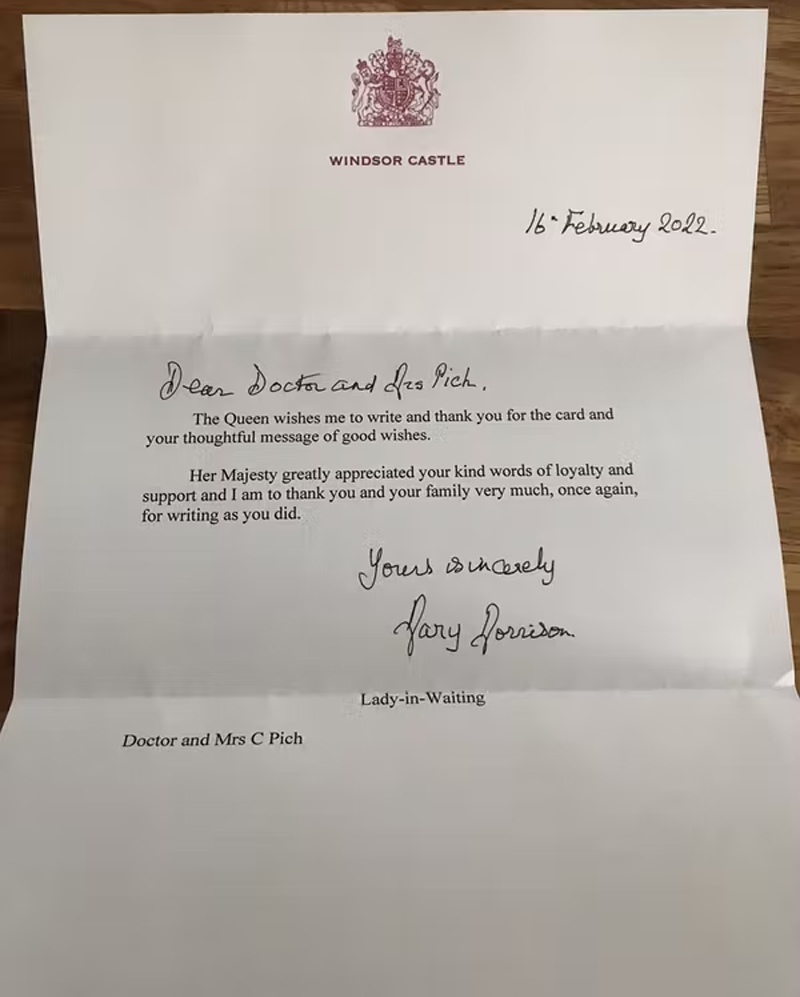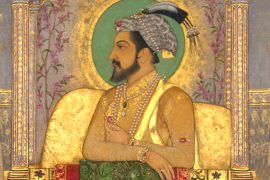As for any meaningful anniversary, gift-giving will be an important part of the Queen’s platinum jubilee celebrations. Over the years, the Queen has received several priceless, unusual and quirky, but also simple and yet very personal gifts from foreign officials, various businesses and organisations and from members of the public. Those gifts attract curiosity and media scrutiny about their nature, appropriateness, the givers’ motivations, but also the Queen’s reaction and responses.
Media outlets have widely reported the gifts presented for the platinum jubilee by Azerbaijani president Ilham Aliyev of a beautiful Karabakh horse and two horse sculptures by sculptor Faiq Hajiyev. At home, the Houses of Parliament will present the Queen with a pair of lampposts adorned with bronze sculptures of heraldic beasts of the United Kingdom worth £175,000.
Not all gifts carry such a high price tag. For example, gifts offered to the Queen for her golden jubilee in 2002 included knitted toys, portraits, banners, tea cosies, china corgis, books and videos. We expect similar gifts to be sent for the platinum jubilee.
For the last year, we have conducted interviews with people who have given at least one gift to a member of the royal family to try to understand the motivation of these present-givers. Our ongoing research has found that simple thoughtful gifts, often homemade, carrying personal meanings are preferred by gift-givers. For example, handmade cards, drawings, recorded video messages, flowers from gift givers’ gardens, scrapbooks and framed photos are popular.
Gifts presented by members of the public are prepared for the royals’ various life milestones (weddings, births, birthdays), notable anniversaries (such as jubilees), but also various official duties (state visits, inaugurations). To be “part of history” motivated some respondents to send a small gift, a letter or a card.

This tradition of gift-giving to the royals started early for many of our respondents, often as children accompanying their parents or grandparents to royal activities, hoping to see them, to hand-in small gifts (cards, photos, teddies, flowers) and even briefly talk to them. They explained that it was very much the “norm to celebrate royal events in the 1970s” in the UK.
Many continued as they grew older, trying to fit in their royal interest with their working lives or their visits across the country, or passing on the tradition to their children. Our participants described those visits as exciting, in particular, when, for the regular followers, the Queen (or other members of the royal family) recognised them, so chose to come to talk to them and take their gifts.
The thrill of giving
While there is no expectation of “traditional” reciprocity as you would see in gift-giving among family or friends, gift-givers to the royals do experience or expect the “thrill” of a possible reply from the royal family.
Some respondents reported that, while they hoped for it, they “didn’t expect a response”, and they were “pleasantly surprised”, “excited”, “amazed” and even overcome with “pride” when they received one. One respondent told us that, “the letter is an important part of my life we all have a story to tell and this letter is part of that life story and the letter adds to my story”.
This highlights the intensely personal nature of the gift-giving exchange here. Indeed, engaging in gift-giving allows people to “feel connected to the royal family”.
Upon receiving a response from the palace, one of our interviewees from the US proudly showed off the letter to friends and family. For her, it was “amazing to receive a letter from Buckingham Palace with the Buckingham Palace seal on the envelope”. Those responses, which can be considered as “return” gifts in themselves, are highly treasured by the recipients.

Susanne, for example, has a long history of gift-giving to members of the royal family. One of the most memorable gifts she sent was the DVD she created with her children to celebrate the Queen’s golden jubilee. She recalls:
I spent maybe 3 or 4 hours preparing and then I made these props. I made cardboard crowns … Molly plays the Queen. She [was] 7-years-old. Children were happy to be part of this. Trying to edit sound and pictures together was probably the biggest thing I have done. I don’t think I wrapped it. I sent it as it is with a cover letter with something like, “We made this film for you for the Diamond Jubilee.” [I] got a good reply: a touching letter from the Queen saying “she was touched” and that it was a “moving film”.
The reply made her children very happy and they were all convinced that the queen had watched their video.
For the platinum jubilee, Susanne sent a handmade card to congratulate the Queen for her “service to us over the past 70 years. I made it myself, just a photo of a few of the books my mum had collected in the 50s and the platinum jubilee coin/stamp cover that I bought”.
She reflected upon the reply from the Queen: “It is lovely how each card is replied to–in the old days it used to be a letter of thanks from a lady in waiting but now, for big events, they send out photo cards. It is a lovely memento of the event and it makes you feel special to receive an acknowledgement from the Queen (even though everyone gets one!)”
Gift-giving to members of the royal family blurs the line between the public and the private spheres. Those who pour time, thought and even money into choosing and creating the perfect gift for the Queen feel they have a personal connection with her, her family and her function as the head of state.
This story first appeared in The Conversation
-30-
Copyright©Madras Courier, All Rights Reserved. You may share using our article tools. Please don't cut articles from madrascourier.com and redistribute by email, post to the web, mobile phone or social media.Please send in your feed back and comments to [email protected]











